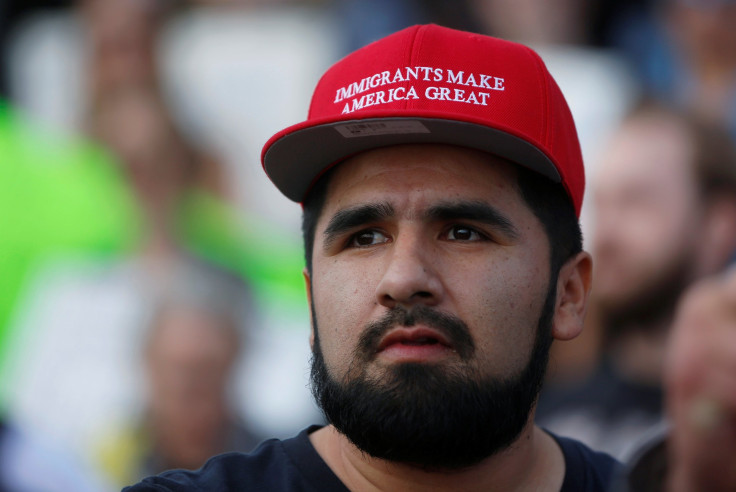Why Did Trump Win? Republican Voters Dislike Their Latino Neighbors, Polls Suggest

Voters who strongly backed Republican Donald Trump for president lived in areas that had seen a significant uptick in Latino residents from 2000 to 2010, a recent poll found. The findings suggest concerns about illegal immigration and the nation's shifting demographics played some role in the election of a Republican billionaire who called Mexicans rapists and vowed to build a wall along the U.S.-Mexico border.
The nation's population of undocumented immigrants grew from 3.5 million in 1990 to 11.2 million in 2012, according to the Pew Research Center. At the same time, the U.S. Hispanic population reached 57 million in 2015, representing more than half the total population growth from 2000 to 2014.
"When Mexico sends its people, they’re not sending their best," Trump said in 2015 when announcing his candidacy. "They’re sending people that have lots of problems, and they’re bringing those problems with us. They’re bringing drugs. They’re bringing crime. They’re rapists. And some, I assume, are good people."
University of London researcher Eric Kaufmann polled white Trump supporters in August. The poll asked people to rate their support for Trump on a scale of 0 to 10. Kaufmann then looked at the growth of the Latino population in each respondent's zip code between 2000 and 2010. His analysis published Thursday on the London School of Economics’ policy blog found people who who had a sudden increase in Hispanic neighbors tended to be hardcore Trump supporters.
"The U.S. was about 90 percent white in 1960, is 63 percent white today and over half of American babies are now from ethnic minorities. Most white Americans already think they are in the minority, and many are beginning to vote in a more ethnopolitical way. The last time the share of foreign born in America reached current levels, immigration restrictionist sentiment was off the charts and the Ku Klux Klan had 6 million members – mainly in northern states concerned about Catholic immigration," Kaufmann concluded.
Roughly 44 percent of Trump supporters want to deport all undocumented immigrants and about 43 percent claim immigrants "mainly weaken American society." Polls also found 66 percent of Trump supporters saw immigration as a "very big problem," while only 17 percent of voters who backed Democrat Hillary Clinton said the same.
Clinton and Trump supporters were also divided over his plan to build a border wall. About 79 percent of Trump supporters want a wall along the entire U.S.-Mexico border, but 88 percent of Clinton voters disapprove of a border wall.
Many Trump supporters deny that their vote was racially motivated. Trump won 72 percent of all white male voters without college degrees and 62 percent of white women with the same education level. When it comes to more educated voters, Trump won 54 percent of the white male vote. In contrast, Clinton won handily among educated white women and all Latino and black populations, regardless of education status.
Anthony Miskulin, 37, owes $57,000 in student-loan debt and earns about $26,000 a year after losing a six-figure job. He said he didn't vote for Trump "out of bigotry."
"It wasn’t out of hatred. It was about survival,” he told the Los Angeles Times.
But Miskulin also lives in Huntington Beach in Orange County, California, where the Latino population has grown by nearly 80 percent while the white population has dropped by 15 percent since 1990. He blamed immigrants for soaring housing prices and government costs.
"I’ve been to the welfare office before, and a lot of people who go there don’t speak English," Miskulin said. "Most of the people who go there, they’re not white. They’re not even black. The most people you see there are mostly Mexican.... They are illegal and they don’t belong in our country."
In Florida's Pasco County, where the Latino population has grown by 232 percent from 19,603 in 2000 to 65,080 in 2014, Republican voter Richard Konst, 74, called Trump his "great white hope."
"Our country is crippled. We need someone to bring life to it. And I'm a firm believer he will do it," Konst told the Tampa Bay Times.
© Copyright IBTimes 2025. All rights reserved.






















